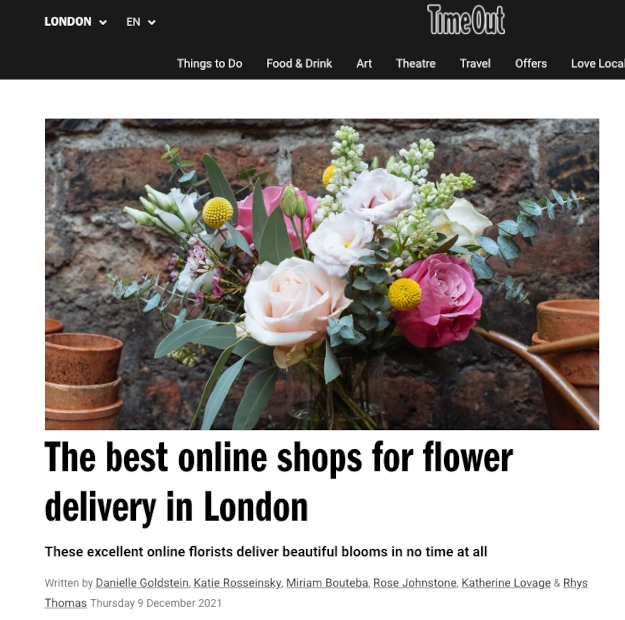In recent years, brands have been finding new ways to promote their products conversationally through social posts and informative content. This approach has led to a demand for content commerce where brands can nurture more meaningful connections with buyers.
“Why, all of a sudden, have retailers decided to become publishers? To answer this question, ask yourself another one: how do people see traditional advertising? That’s right — they’d rather not see it at all.”
– Styla
What is content commerce?
Content commerce is media that allows viewers to inform their buying decisions and take action within the content itself.
For example, there might be multiple calls to action allowing readers to purchase recommended products in a blog that explains how to take care of your skin during the winter months. The blog informs readers, inspires them to explore possible solutions, and then gives them multiple clickable/shoppable options to purchase.

Content commerce is similar to Facebook’s in-app shopping feature, where users can see a product they like in a post, add it to their cart, and complete a transaction without ever having to leave Facebook or Instagram. But in content commerce, publishers partner with ecommerce brands and offer shoppable content on their own platforms and vice versa.
The key to successful content commerce is relevancy and authenticity.
Any content featuring a product or service must only offer products that align with what the reader hopes to gain from the blog, video, image, etc.
Similarly, people don’t mind a thoughtful product recommendation when it is relevant to the topic and accompanied by credible information. A relevant endorsement is authentic, and authentic content builds trust with consumers.
The history of content commerce
While the concept of content commerce is a fairly recent trend, using content to inspire and guide consumers has been around for a long time. Since the rise of search engines and the information age, news publishers and magazines have struggled to keep readers engaged as cutting-edge brands deployed various content marketing strategies.
Additionally, online publishers with little-to-no overhead changed the way people consumed information. And traditional print media struggled to maintain profits.
Before long, print ad sales shifted to digital ad sales. These digital ads worked for a time but have decreased in recent years, forcing brands and publishers to rethink their approach.
Social media as a publishing channel extended the life of digital advertising because platforms like Instagram and Twitter could embed ads seamlessly into user feeds and target audiences based on third-party cookies. But with the recent consumer privacy policy changes, these channels have struggled to gather the information they need to tailor ad campaigns to certain users.
Overall, print and digital advertising have experienced a shocking decline in effectiveness.
As a result, forward-thinking marketers focused on offering readers and viewers a more compelling content experience. Brands began investing more into content marketing, and publishers looked for ways to partner with brands in a more sustainable way. This marriage of retail content marketing and publishing produced what is now content commerce.
Both parties learned quickly that integrating products into informative content resonated with consumers in a new way. This approach both inspired and guided future purchases while simultaneously increasing ROI for brands and publishers.
Today, there are two branches of content commerce:
- Content-driven commerce – In this approach, a retail brand leverages content to create a seamless shopping experience within the content itself.
- Commerce-driven content – In this approach, a publisher partners with a brand and features their product(s) organically within its content.
The effect of content commerce on a brand
The traditional approach of “talking at” customers no longer has the same effect it once did. Brands must earn trust with consumers by giving them accurate information and acquiring authentic endorsements from credible people, publishers, and organizations.
Additionally, consumers are growing impatient with content that offers a great solution but requires them to jump through hoops (copy/paste a link, create an account, etc.) to complete a transaction. Frictionless ecommerce — where customers can complete a purchase in fewer swipes/clicks — is revolutionizing online shopping.
In content commerce, information, recommended solutions, and the ability to shop all take place within the content. The consumer can learn and buy in one place.
The difference between content commerce and affiliate marketing
Content commerce can include affiliate marketing, but affiliate marketing isn’t necessarily content commerce.
In affiliate marketing, someone with a publishing channel has a commission-based relationship with one or more brands, using links and/or discount codes to convert visitors into customers.
Many affiliate campaigns aren’t focused on frictionless shopping experiences in the same way that content commerce initiatives are. For example, most affiliates deploy links to third-party domains versus embedding shopping features within their content.
But with content commerce, there are two key differences:
- Content commerce usually involves shoppable content features that make completing a purchase more convenient than jumping across multiple links.
- It’s not just an affiliate that can post shoppable content — the retailer can also publish commerce-driven content on their own channels.
Benefits of implementing a content commerce strategy
1. The call to action feels more organic.
Scrolling past a “See more here” or “Shop now” button within a list of best solutions for solving a particular problem is more natural than seeing a random ad at the top of a search engine results page or email inbox. The content is clear in its message, helps the viewer wrap words around what they want, offers one or more relevant solutions, and then provides a simple conversion option.
2. It’s more cost-effective than traditional advertising.
Creating commerce-driven content on your own publication channels or partnering with a publisher is less expensive than running traditional digital ad campaigns. In many cases, retailers can enter into an affiliate partnership with a publisher so that there are no front-end costs at all.
3. It focuses on giving consumers helpful information.
Users are more receptive to offers and products once the brand earns their trust by providing helpful information. Content commerce focuses on inspiring and informing consumers before trying to convert them.
4. It’s optimized for a more frictionless ecommerce experience.
In ecommerce, “frictionless shopping means that customers can do more browsing and buying with fewer inconveniences along the way.” Giving your audience the option to take action right away makes the shopping experience more enjoyable and convenient.
How social media networks are adapting content commerce to their platforms
Pinterest is a channel that often follows the content commerce model. Brands and affiliates love how easy it is to incorporate shoppable links within posts, pins, and boards.
In the example below, betterme.health.coaching maintains a collection of visual posts, each linked to a helpful article on the infographic topic.

When you click on the link, you arrive on an informative blog that thoroughly explains the topic and offers helpful solutions. Because the brand is a health and wellness app, it strategically integrates CTAs encouraging readers to download the app.

DTC brands already using content commerce successfully
“So here we are, on the verge of content and commerce. Whatever perspective you acquire, integrating content into commerce (and the other way around) is easier said than done. Product has to be worthy, content has to be authentic, and the transaction experience — a bridge between publishing and retail — must be seamless.”
– Olga Rabo, content marketing and community manager at Styla
ChefSofi
BuzzFeed is well-known for partnering with retailers for their listicle blogs. In the article below, ChefSofi — a kitchenware brand — joined the list of gift ideas in a blog published just before Christmas.

In the article, BuzzFeed didn’t even mention the brand’s name. Instead, it featured an aesthetically pleasing image and product description for an adorable charcuterie board, along with a buyer review, and linked the listing to ChefSofi’s product page on their Amazon Store.

Appleyard Flowers
Tourist and hospitality publication TimeOut decided to feature a handful of florist brands available to consumers in London. The article was regionally specific and offered readers a variety of retailers to choose from.

One brand, Appleyard Flowers, made the list. Their write-up included a beautiful photo, a short description of the brand, and the opportunity to “Read more” or shop on their online store.

Shopbop
Shopbop offers a variety of women’s casual and dress shoes at an affordable price. When Vogue decided to create a celebrity-focused blog on affordable fashion, Shopbop was able to get a feature since Angelina Jolie had worn the brand’s Dolce Vita Fraser loafers.

This example was compelling because both a reputable publication and celebrity endorsed Shopbop. Readers could easily equate affordable, high-quality fashion with the Shopbop brand.

Integrating influencer marketing with content commerce
When implementing content commerce with the help of creators, the creator becomes the “publisher” of commerce-driven content. But just as content commerce must be relevant and authentic to be successful, brand-influencer partnerships must work just as hard to keep their campaign consumer-focused.
“For a creator/brand relationship to have any shot at success, consumers need to believe it’s the real deal. This means taking critical steps to build trust and authenticity with your creators.”
– GRIN, Creator Management: Inspire Belief
Brands can achieve the best results with influencers by making sure that they and their creator partners are a good fit. The influencer should genuinely love the products they promote, and the brand must share the creator’s audience.
Conclusion
Now that third-party cookies and remarketing are declining across the digital space, it’s critical that brands find better ways to connect with their audience. By crafting relevant content around quality products that meet consumer needs, brands can save money on traditional advertising and build deeper relationships with their customers and prospects.
Learn more about influencer marketing: Influencer Marketing 101





















